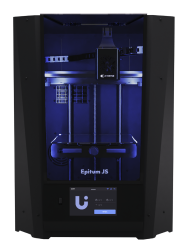
PLA material for 3D printing is known for its ease of use and environmental friendliness. It is one of the most common filaments for 3D printing, and it is used by everyone from beginner hobbyists to professionals.
What does pla stand for in 3D printing? PLA stands for Polylactic Acid or “Polylactide”. This thermoplastic polyester is made from cornstarch or sugarcane. It is produced from renewable resources, which makes it more environmentally friendly than petroleum-based plastics.
Why 3D Print with PLA?
Pros:
PLA has a low melting temperature, usually around 180-220 degrees Celsius. This allows it to be used on almost any 3D printer, even inexpensive ones. It has good stiffness but is less flexible compared to ABS or PETG.
PLA also has excellent layer adhesion and minimal shrinkage, allowing large prints without the worry of warping.
Additionally, PLA comes in almost any color, even multicolored, which can be appealing to beginners and makers creating decorative elements.
Ease of use is one of the key advantages of PLA. The Epitum material profile base simplifies printing with PLA filament, as users don't need to adjust settings manually. They just select the PLA from the required manufacturer in the database and start printing. If users want to switch to other plastics, the database already has preset profiles for more than 70 materials.
Cons:
The disadvantages of PLA arise from its advantages. PLA has very low heat resistance. Objects made from this plastic will start to deform at temperatures around 60 degrees Celsius.
For example, if a PLA object is left under the scorching sun on a hot day, it may deform. Additionally, this material degrades under ultraviolet light, so it is not advisable to leave PLA parts outside.
PLA also has low flexibility, making it comparatively brittle. Objects made from this material can crack.
PLA has low chemical resistance and can easily deteriorate under the influence of solvents and acids.
PLA absorbs moisture, so spools need to be dried before printing.
This filament is a poor choice for any functional items that will be subjected to any kind of stress. However, this material is still suitable for printing decorative elements that will be kept inside your home or office.
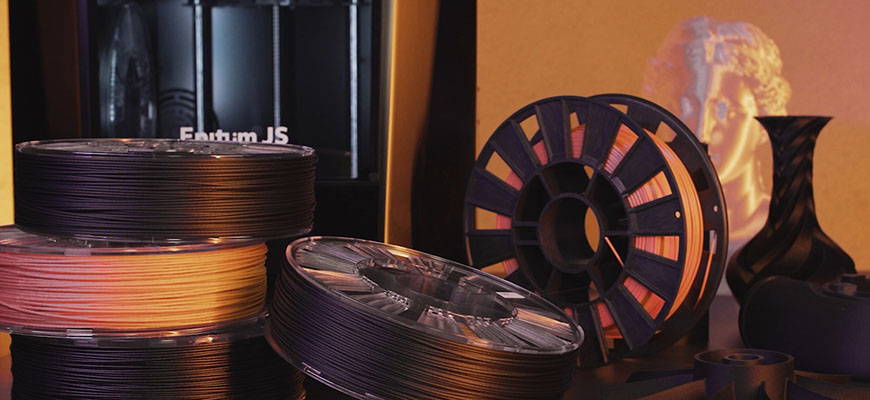
PLA Filament Types
Standard PLA: This is the most common type of PLA, suitable for general-purpose 3D printing. It is available in a wide range of colors, including both solid and translucent.
Silk PLA: Silk PLA has a glossy finish that resembles silk. It is perfect for decorative items and aesthetic models.
Matte PLA: This type has a matte finish, giving prints a less glossy and more professional look. Suitable for prototypes.
Wood-filled PLA: A composite filament that includes wood fibers, giving prints a wood-like appearance and texture. It usually comes in various wood tones, such as oak, pine, and mahogany.
Metal-filled PLA: This type of PLA contains metal powders, such as bronze, copper, or aluminum, which give prints a metallic finish and added weight. It is usually available in metallic colors like bronze, copper, and silver. Metal-filled PLA is ideal for jewelry, art pieces, and decorative items that benefit from a metallic look.
Glow-in-the-dark PLA: Contains phosphorescent materials that glow after being exposed to light. It is fun for toys, decorations, and safety items.
Multicolor or Gradient PLA: This PLA changes color throughout the spool, creating prints with gradient or multi-colored effects. The colors blend in various combinations, often vibrant and eye-catching.
Typically, all types of PLA differ only in appearance and are more of a fun novelty rather than having any practical use. Please note that each of these PLA variations requires its specific printing settings. This article focuses on standard PLA filament, which is the most common type.
Uses of PLA Plastic
Education:
PLA is one of the most popular filaments in education because it is eco-friendly and easy to work with. This makes it great for school students. PLA can be used to create various visual aids and safely practice prototyping skills.
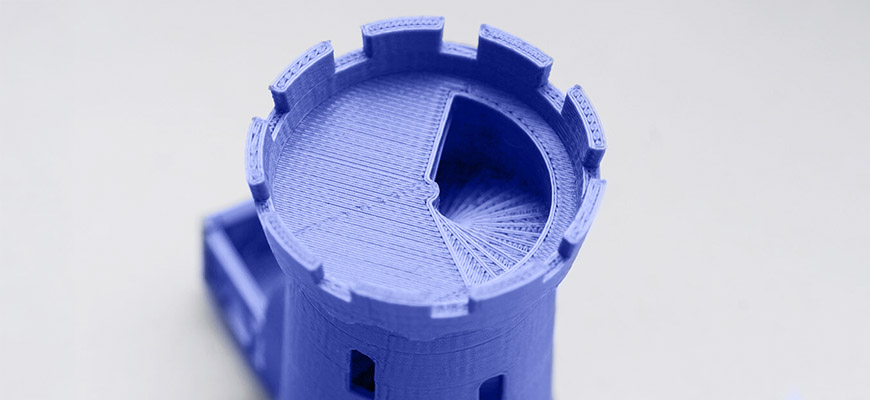
Industry and Business:
PLA filament is suitable for creating prototypes that won’t be exposed to high temperatures, loads, or chemicals. It is suitable for almost any non-functional prototype. 3D-printed prototypes can significantly help businesses by saving time and resources.
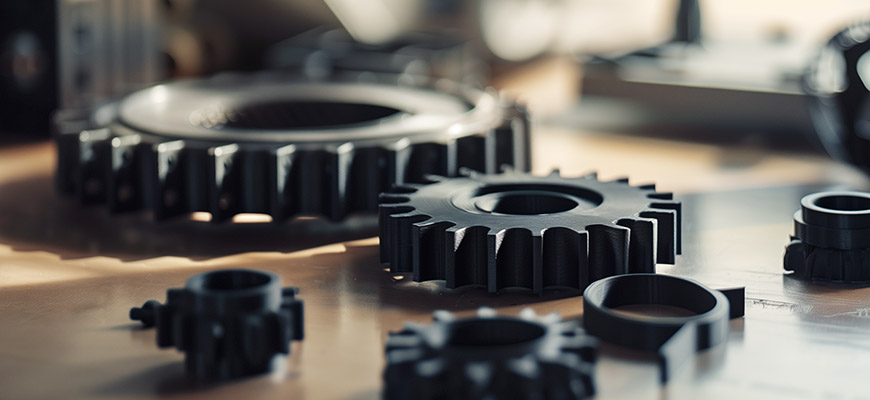
Hobbies and Home Use:
PLA is safe and eco-friendly and available in a wide range of colors, making it popular for home use in various hobbies, toy creation, and decorative elements.
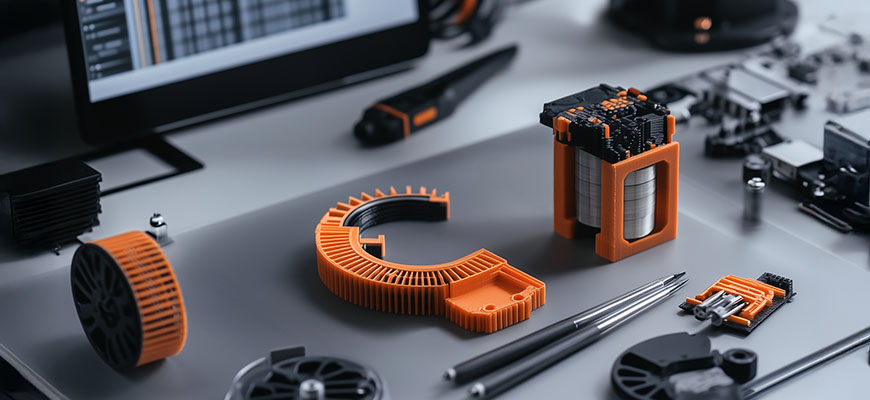
Tips for 3D Printing with PLA
Choosing the Filament:
Buying quality filament is critical to successful printing and suitable results. Pay attention to its color, brand, and diameter, usually 1.75mm. It is best to choose PLA from well-known brands, as the composition and quality can vary significantly.
Temperature for PLA 3D Printing:
For successful 3D printing, you need to set the correct temperature settings. Depending on your equipment and manufacturer, the extruder temperature should be between 180 and 220 degrees Celsius. The usual bed temperature is around 50-60°C. The Epitum profile database has pre-selected optimal settings for PLA 3D printing material from well-known manufacturers.
Adhesion:
To improve adhesion and ensure the part sticks securely to the 3D printer's building plate, use glue for 3D printing or painter's tape on some 3D printers.
If you experience clogs or interruptions in filament feeding, check the nozzle cleanliness and the filament feed mechanism. To combat PLA 3D print warping and delamination, try reducing the printing speed or increasing cooling.
Keep Filament Dry:
PLA is hygroscopic, meaning it absorbs moisture. Store PLA filament in a dry place or use a filament storage box with desiccant to prevent moisture absorption, which can cause poor print quality. If your filament has absorbed moisture, you can use a special filament dryer or oven or dry the material in your 3D printer.
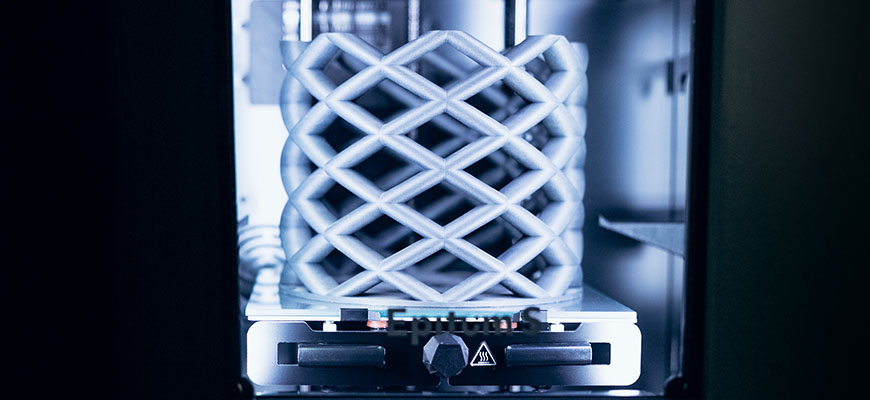
Post-Processing PLA
PLA can be sanded to smooth the surface and visually remove layers. Start with a coarse grit (around 200) and gradually move to finer grits (up to 2000) for a polished finish.
The sanded model can be painted. To do this, apply a primer to even out imperfections and improve paint adhesion to the surface. Then, use acrylic paints to paint the model.
If you need to print a large item that doesn't fit in the 3D printer all at once, you can print it in parts and glue them together. PLA parts should be glued with cyanoacrylate glue.
Unlike ABS, PLA should not be exposed to acetone, as it can cause significant deformation.
Do not expose PLA items to high temperatures, as this can significantly deform your item.
Conclusions
PLA plastic is an excellent choice for 3D printing due to its eco-friendliness, ease of use, and good mechanical properties. It is great for beginners and students, but experienced users will also find many applications where this filament is suitable.
PLA can provide high-quality prints and extensive creative possibilities with the right settings and equipment. Beginners should start with simple models and gradually take on more complex projects. Experienced users should experiment with different settings and post-processing techniques to achieve the best results.
If you want to create high-quality functional prototypes, find out which materials suit you in our review article about the best materials.





